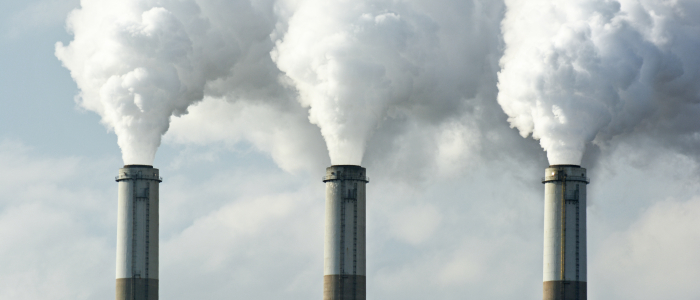
On 19 June 2025, Germany’s Federal Ministry for the Environment published a draft bill of a second Act to Further Develop the Greenhouse Gas Reduction Quota (GHG quota). The proposed legislation will implement the updated EU Renewable Energy Directive, and further tighten the quota requirements – previously raised by the first Act in 2021. The draft introduces significant changes to the GHG quota system, including a gradual increase in the quota to 53% by 2040, the extension of GHG obligations to the aviation and shipping sectors and the elimination of double counting. In response to recent developments concerning invalid emission reduction certificates from China, the bill also introduces on-site inspections.
Background and objective
The draft marks the next step by the Federal Government towards complying with its now-expired deadline of 21 May 2025 to implement the Renewable Energy Directive (“RED III”) (Directive (EU) 2023/2413 of the European Parliament and of the Council of 18 October 2023 amending Directive (EU) 2018/2001, Regulation (EU) 2018/1999 and Directive 98/70/EC as regards the promotion of energy from renewable sources, and repealing Council Directive (EU) 2015/652). It aims to strengthen incentives for reducing greenhouse gas emissions in the transport sector in order to help achieve the 2050 climate neutrality targets set by the Federal Government and the EU, in line with the “Fit for 55” package.
The GHG quota provisions were initially amended in 2021 through the first Act to Further Develop the Greenhouse Gas Reduction Quota (Federal Law Gazette I, p. 4458). This Act alone introduced significant changes, including a gradual increase in the GHG quota to 25% by 2030 and adjustments to the crediting system for various fuels, e.g. biofuels made from raw materials with a high risk of land use change (such as palm oil). These fuels had long been criticised for their negative environmental impacts and have no longer counted towards the quota since 2023.
The draft bill now also addresses recent criticisms of the use of upstream emission reduction certificates (“UER certificates”) from China. These certificates represent emissions reductions achieved through climate protection projects in oil and gas extraction prior to the fuel (e.g. crude oil or natural gas) entering the refinery or processing plant. Since 2020, companies with greenhouse gas quota obligations have been able to meet part of these obligations using certificates of this kind. Project developers have been able to apply to the Federal Environment Agency for approval of projects aimed at reducing upstream emissions and subsequently issue UER certificates for these projects in the Agency’s UER register. Recently, suspicions have emerged that biodiesel imported from China was not produced from used cooking oil or wastewater from palm oil production as declared, but rather from palm oil itself – which has been banned since 2023. The Federal Environment Agency is currently investigating and may initiate formal inspections. The Federal Government has also responded by amending the regulation on credits for upstream emissions, ending this offsetting option from 2025. Credits will no longer be granted for UER projects with incomplete application documents as of 1 July 2024. And in response to the suspected use of palm oil, the draft bill now also stipulates that only emission reductions from biofuels and fuels of biological origin that allow for on-site inspections by Member States may be credited.
Draft bill
Key changes
Scope of application expanded to include aviation and shipping: One of the most significant changes is the expansion of the scope of application of the statutory GHG quota. Currently only entities placing diesel and petrol on the market have to comply with the quota, but the draft extends this obligation to aviation and shipping, thereby covering all fuel suppliers for all transport sectors. This means that suppliers of natural gas, liquefied gases and aviation turbine fuel for use in ground vehicles and aircraft will also have to comply with the quota. German biofuel associations have already called for such an expansion in the past.
This will eliminate the separate quota for renewable fuels of non-biological origin (RFNBO), which would have been mandatory for aviation from 2026. Instead, the Federal Government is now introducing a general quota for all transport sectors. The draft bill proposes a quota of 1.5% from 2030, which is to be gradually increased to 12% by 2040. Although fuel suppliers in the shipping sector must also fulfil this quota, they are to be treated differently based on the argument that the use of renewable energies in shipping can be cheaper, which could result in a significant imbalance between the savings achieved in the different sectors.
Increase and continuation of GHG quota until 2040: Another considerable change is the proposal to increase and continue the GHG quota until 2040. It is to be gradually increased to 53%, bringing the share of renewable energies to over 77% according to the RED III calculation method. A small increase of 0.1% is planned for 2025 and an increase of 0.5% for 2027. The other targets up to 2030 remain unchanged. From 2030, the increase will take place in 2% increments reaching a reduction rate of 37% in 2036. This will be followed by increases of 3% for 2037 and 2038 and 4% for 2039. Finally, the draft proposes a 6% jump from 47% in 2039 to 53% in 2040. This is in line with past calls for the GHG quota’s timeframe to be extended in order to provide the industry with more planning security.
The (minimum) quota for advanced biofuels has also been increased. Advanced biofuels are defined as fuels produced from waste and residues, such as algae, straw, sewage sludge or nutshells. The Federal Government is now proposing an expansion of this definition to include, for example, fusel oils from alcohol distillation and cyanobacteria. The minimum quota – along with other extensive provisions – is part of the strategy for reducing GHGs. Fuel suppliers must place a certain quantity of advanced biofuels on the market each year. This minimum percentage is to be increased from 2026: The draft envisages a doubling of the quota from 1% to 2% for 2026, an increase from 1.7% to 2.5% for 2028 and a minimum of 3% for 2030.
No more double counting or counting soybean oil as well as palm oil residues and by-products towards the quota: The draft also eliminates “double counting”. Where the advanced biofuels placed on the market by the obligated parties exceed the minimum percentage, suppliers have so far been able to have the fixed minimum quota counted twice towards the GHG quota. According to the draft, this will no longer be permitted. Suppliers may only apply for the volume of energy they place on the market to be offset against the minimum percentage applicable to the following compliance year. The Federal Government argues that large amounts of the fuels have been used in recent years, which suggests a corresponding market availability. For this reason, no further incentive apart from the stipulated offsetting option is necessary.
It will no longer be possible to count soybean oil or residues, waste and by-products from palm oil production towards the GHG quota, either. This addresses the concern that (conventional) soybean oil and palm oil production in particular have a considerable negative impact on nature and the environment. Although it has not been possible to offset palm oil itself since 2023, the resulting residues, waste and by-products can still be offset. With its new draft, the Federal Government now wants to prevent such “cross-subsidising”, particularly in the case of unsustainable palm oil production.
- Restructured mechanism for adjusting the GHG quota: The draft also fundamentally restructures the mechanism for adjusting the GHG quota provided for in section 37h Federal Emissions Control Act (Bundes-Immissionsschutzgesetz, “BImSchG”). The Federal Government is introducing more flexibility to be able to respond more effectively to (a high degree of) overcompliance by the obligated parties and to changes in other compliance options. According to the draft, if overcompliance reaches a certain level in a given year, the Federal Government will be able to raise the GHG quota by ordinance. One of the main reasons for this modification is the high degree of overcompliance in recent years due to biofuel from China that was, presumably falsely, declared as “advanced” and the resulting price reduction for GHG certificates.
- Emission reductions require on-site inspection in order to be counted: The issue of “fraud prevention” is also addressed by the Federal Government elsewhere in the draft. For example, biofuels and renewable fuels of non-biological origin from production facilities that cannot be inspected on site by an inspection authority of an EU Member State during normal operating and business hours are not to be counted towards the GHG quota. The same will apply to advanced biofuels with respect to the minimum quota.
Lowering the upper limit for biofuels produced from food and animal feed: The key changes also include lowering the upper limit for biofuels produced from food and animal feed. Section 13 of the 38th Ordinance for the Implementation of the Federal Emissions Protection Act (Verordnung zur Durchführung des Bundesimmissionsschutzgesetzes) currently provides for a rigid upper limit of 4.4%. The draft calls for this to be lowered in two stages: From 2028, these biofuels may make up only 3.5% of the total energy to be taken into account, and from 2030, only 3%. On the one hand, this is intended to prevent or reduce harmful environmental impacts. On the other hand, the Federal Government seeks to incentivise the use of more sustainable compliance options (e.g. green hydrogen).
Although the upper limit will remain the same as a percentage until lowered in 2028, the absolute quantity of biofuels produced from food and animal feed would increase due to the expansion to include all transport sectors. To counteract this, the Federal Government continues to base the calculation of the percentage limit solely on the volume of energy of petrol and diesel for use in ground vehicles (plus any compliance options used).
Postponement of the Federal Government’s evaluation report and notification deadline for obligated parties: next report to the Bundestag would be required in 2026. This deadline is to be pushed back since, according to the Federal Government, a report in 2026 would be too soon after the newly drafted act, with its far-reaching changes, and would therefore not make sense. Instead, an evaluation will not take place until 2028.
Obligated parties now have until 1 June – instead of 15 April – of the calendar year following the compliance year to comply with the notification requirement of section 37c BImSchG.
Conclusion and outlook
By further tightening the GHG quota and introducing on-site inspections, the Federal Government is responding to the recent suspicions of the use of invalid UER certificates from China – concerns that arose due to quota overcompliance and the resulting drop in the price of GHG certification. Beyond the changes implemented in 2021, other modifications include extending the GHG quota to aviation and shipping, which will now also be subject to emission reduction targets. Germany is, however, lagging behind other Member States with its proposed quota for renewable fuels of non-biological origin and merely meeting the minimum requirements set by RED III. Although the GHG quota is set to gradually increase to 53% by 2040, it remains uncertain whether this substantial increase will be sufficient to achieve climate neutrality by 2050.
